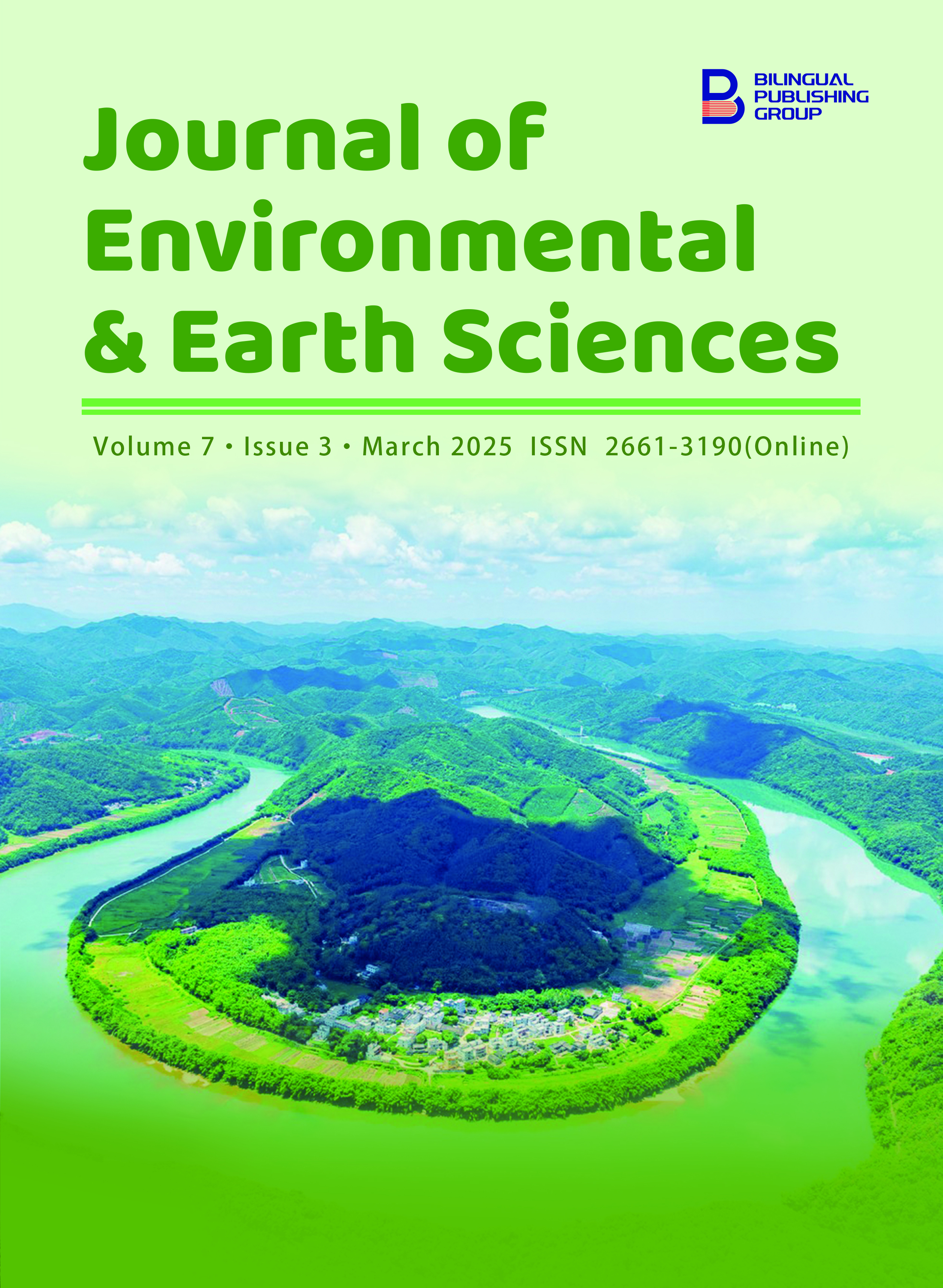
Resident Perceptions of Nature-Based Solutions for Flood Mitigation in Phnom Penh, Cambodia
DOI:
https://doi.org/10.30564/jees.v7i3.6621Abstract
Nature-based solutions (NBS) involve the sustainable maintenance, management, and restoration of natural or modified ecosystems. Flooding is a major problem in Phnom Penh, Cambodia, and has significant social and economic ramifications. This study tries to suggest creative solutions that support human welfare and biodiversity while simultaneously resolving social problems by adopting NBS. An online survey using convenience and snowball sampling was conducted to assess the openness of Phnom Penh residents to adopting NBS for flood mitigation in their homes or buildings. The survey investigated perceptions of NBS effectiveness based on previous knowledge and flood risk perception. Results revealed a strong correlation between perceived efficacy and willingness to adopt NBS. Specifically, flood risk perception and prior knowledge significantly influenced the perceived effectiveness of NBS. Key findings indicate that high installation and maintenance costs, lack of awareness, limited space, cultural factors, and perceived ineffectiveness are primary barriers to NBS adoption. Additionally, specific regional factors contribute to reluctance in certain areas of Phnom Penh. To overcome these barriers, the study recommends that the Cambodian government and other stakeholders invest in public education campaigns to raise awareness about the benefits of NBS. Financial incentives and subsidies should be provided to reduce the economic burden on residents. Furthermore, integrating NBS into urban planning and infrastructure development is crucial to enhance community resilience against floods.
Keywords:
Nature-Based Solutions; Pluvial Flood; Flood MitigationReferences
[1] Tobey, M.B., Chang, S., Binder, R.B., et al., 2019. Typologies of rapid urbanization in developing Asian countries: A study of Shanghai's rapid urbanization and subsequent strategies. In Proceedings of the Sustainable Built Environment Conference 2019 (SBE19Tokyo); Tokyo, Japan, 6–7 August 2019. p. 012097.
[2] Sreang, K., 2023. Flooding in Phnom Penh. Phnom Penh Post. Available from: https://www.phnompenhpost.com/national/rain-induced-flash-floods-outskirts-capital-recede (cited 5 March 2025).
[3] Azizi, K., Diko, S.K., Saija, L., et al., 2022. Integrated community-based approaches to urban pluvial flooding research, trends and future directions: A review. Urban Climate. 44, 101237.
[4] Veerkamp, C., Ramieri, E., Romanovska, L., et al., 2021. Assessment frameworks of nature-based solutions for climate change adaptation and disaster risk reduction. ETC/CCA technical paper 2021/3.
[5] Peng, Y., Reilly, K., 2021. Using nature to reshape cities and live with water: An overview of the Chinese Sponge City programme and its implementation in Wuhan. EU project GROWGREEN grant agreement no. 730283, January 2021.
[6] Kabisch, N., Frantzeskaki, N., Hansen, R., 2022. Principles for urban nature-based solutions. Ambio. 51(6), 1388–1401.
[7] Lutfi, E., Berge, G.M., Bæverfjord, G., et al., 2023. Increasing dietary levels of the n-3 long-chain PUFA, EPA and DHA, improves the growth, welfare, robustness and fillet quality of Atlantic salmon in sea cages. British Journal of Nutrition. 129(1), 10–28.
[8] Susdrain—The Community for Sustainable Drainage, 2023. Susdrain. Available from: https://www.susdrain.org/delivering-suds/ (cited 15 June 2023).
[9] EU, Climate ADAPT sharing adaptation knowledge for a climate-resilient Europe. Available from: https://climate-adapt.eea.europa.eu/en (cited 15 June 2023).
[10] Spaans, M., Waterhout, B., 2017. Building up resilience in cities worldwide–Rotterdam as participant in the 100 Resilient Cities Programme. Cities. 61, 109–116,
[11] IPCC, 2021. Climate change 2021: The Physical Science Basis. Contribution of Working Group I to the Sixth Assessment Report of the Intergovernmental Panel on Climate Change. Available from: https://www.ipcc.ch/report/ar6/wg1/ (cited 3 June 2024).
[12] Kundzewicz, Z.W., Kanae, S., Seneviratne, S.I., et al., 2014. Flood risk and climate change: global and regional perspectives. Hydrological Sciences Journal. 59(1), 1–28.
[13] Bernello, G., Mondino. E., Bortolini, L., 2022. People's perception of nature-based solutions for flood mitigation: the case of Veneto Region (Italy). Sustainability. 14(8), 4621.
[14] Santos, F., 2021. Nature-based solutions for flood mitigation. Sustainable Cities and Society. 65, 102–110.
[15] Cochran, W.G., 1997. Sampling Technique, 3rd ed. John Wiley & Sons: New York, NY, USA. pp. 1–448.
[16] NEC, 2023. National Election Committee (NEC). Available: https://www.nec.gov.kh/khmer/ (cited 3 June 2023).
[17] The R Core Team, 2013. R: A language and environment for statistical computing. Version 3.3.1 (2016-06-21).
[18] Ferreira, C.S.S., Potočki, K., Kapović-Solomun, M., et al., 2021. Nature-based solutions for flood mitigation and resilience in urban areas. In: Ferreira, C.S.S., Kalantari, Z., Hartmann, T., et al. (eds.). Nature-based solutions for flood mitigation: Environmental and socio-economic aspects. Springer International Publishing: Cham, Germany. pp. 59–78.
Downloads
How to Cite
Issue
Article Type
License
Copyright © 2025 Sophanith So, Reach Rim, HyeMin Park

This is an open access article under the Creative Commons Attribution-NonCommercial 4.0 International (CC BY-NC 4.0) License.







 Sophanith So
Sophanith So






